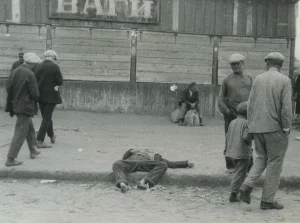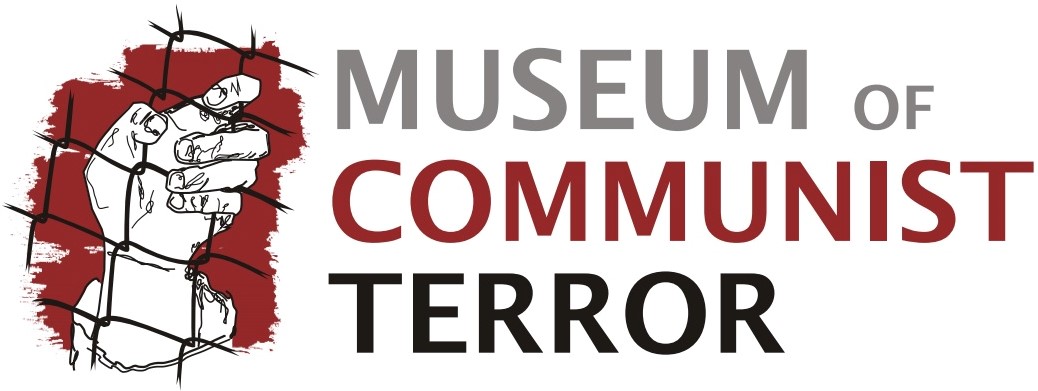Holodomor was a famine in Ukraine in 1932-33 in which 3.9 million people starved to death.1 The famine is widely accepted as having been enforced by Stalin.
In 1928, Stalin began to introduce agricultural collectivisation policies. Farmers were forced to give up their farms to create larger ones controlled by the state. Stalin thought that collectivisation would increase production but the opposite happened.2
The Soviet government also demanded that Ukraine should export a large amount of grain to feed other parts of the Soviet Union and to sell to other countries to gain foreign currency. In January 1932, almost a million tons of grain were collected across the Soviet Union of which 40% was provided by Ukraine.3 Decreased production and increased collections by government inevitably caused a shortfall for consumption in Ukraine. In February, Soviet leaders began to receive reports from the secret police and the Ukrainian government that food shortages were occurring.
In June, two Communist leaders of Ukraine, Vlas Chubar4 and Grigory Petrovsky,5 both wrote to Stalin graphically telling him about widespread hunger. Petrovsky wrote that he had seen “a considerable part of the countryside engulfed in famine” and asked for “urgent food relief”.6 Stalin knew that the famine was taking place but refused to help and blamed others. In a letter to his colleague Lazar Kaganovich, Stalin said that he “did not like” the letters of Chubar and Petrovsky and that a reduction in grain procurement from Ukraine was not “acceptable”.7
The grain which the central government had targeted for collection could not be found. In the months of October and November 1932 combined, only 39.4% of the procurement target had been collected.8 Stalin sent Kaganovich and high-ranking members of the secret service to enforce collection. Despite the growing famine, they put pressure on the Ukrainian Communist Party to resolve that all collective farms which had not fulfilled their quota must ship within five days all their grain reserves including those kept by for future sowing.9 Armed groups demanded grain and other foodstuffs and searched for hiding places. Resistance was met by arrests and executions.
The death rate from starvation was highest between February and July 1933. Many attempted to leave the country but Stalin implemented a directive preventing the sale of train tickets to peasants. There were reports of cannibalism. In the later stages of starvation, people became weak and listless. Bellies became inflated. Corpses were dropped into mass graves or just left on the street.
Over 15 countries, including Australia and Canada, now recognise Holodomor as a genocide.

The corpse of a man in Kharkiv, Ukraine, taken in 1932.
“Step by step…the Soviet leadership, aided by their cowed Ukrainian counterparts, launched a famine within a famine, a disaster specifically targeted at Ukraine”
Anne Applebaum, Red Famine
“We owe it to the victims of the Holodomor and other genocides to be truthful in facing up to the past”
Viktor Yushchenko, President of Ukraine
____________________
1. Applebaum, A. (2017). Red Famine. [London]: Allen Lane. p.285
2. Applebaum, A. (2017). Red Famine. [London]: Allen Lane. p. 163-168.
3. Davies, R. and Wheatcroft, S. (2009). The Years Of Hunger. 2nd ed. New York: Palgrave Macmillan. p. 100
4. Chairman of the Council of People’s Commissars in Ukraine.
5. President of the Executive Committee of Ukrainian Soviets.
6. Letter from Petrovsky to Molotov and Stalin on the grave food situation and famine in the Ukrainian SSR (excerpts), June 10, 1932, p.7. Available at: https://education.holodomor.ca/wp-content/uploads/2017/09/Pyrih-Holodomor-Book_ENG_June2011.docx
7. Letter from Stalin to Kaganovich on Appeal from Ukrainian SSR leaders to CC AUCP(b) (excerpt) June 15, 1932, p.11. Available at: https://education.holodomor.ca/wp-content/uploads/2017/09/Pyrih-Holodomor-Book_ENG_June2011.docx
8. See Davies, R. and Wheatcroft, S. (2009). The Years Of Hunger. 2nd ed. New York: Palgrave Macmillan. p. 171.
9. Applebaum, A. (2017). Red Famine. [London]: Allen Lane. p.194-195
10. From 1935 publication ‘Muss Russland Hungern?’ [Must Russia Starve?], published by Wilhelm Braumüller, Wien [Vienna]. No copyright.
11. P193.
12. Yushchenko, V. (2007). The Holodomor. [online] WSJ. At that time, he was President of Ukraine. Available at: https://www.wsj.com/articles/SB119602928167703318


